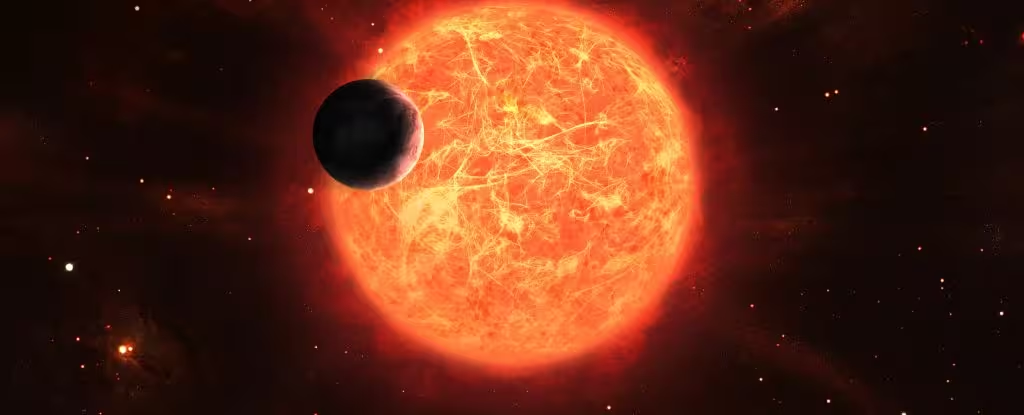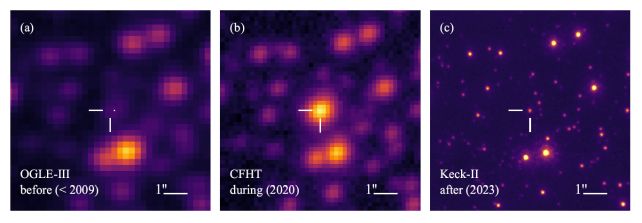Earth-like planet discovered orbiting an alien star
- September 26, 2024
- 0
The search is on for a second Earth somewhere in the Milky Way Galaxy, but the newly discovered world is anything but. It has a mass of 1.9
The search is on for a second Earth somewhere in the Milky Way Galaxy, but the newly discovered world is anything but. It has a mass of 1.9

The search is on for a second Earth somewhere in the Milky Way Galaxy, but the newly discovered world is anything but. It has a mass of 1.9 times that of Earth and orbits its star about twice as far from the Sun as Earth… but that star is a white dwarf, meaning that any life that might have existed on this exoplanet was likely destroyed long ago or during the death throes of the red giant star.
But the discovery is still exciting: It’s a glimpse into the future of the solar system and the fate of Earth as the Sun dies and completes its evolution into a white dwarf. The work, led by astronomer Keming Zhang of the University of California, Berkeley, shows the potential of the detection method, a phenomenon known as microlensing, to find other Earth-like worlds in hard-to-find locations elsewhere in the galaxy.
When stars like the Sun die, they become white dwarfs. Their cores run out of hydrogen fuel for fusion and become less stable, swelling to gigantic proportions. This is the red giant phase. Eventually, the star will expel all of its outer material and the core will collapse under the influence of gravity, forming a dense object whose bright light will be created not by fusion but by the heat left in the process of collapse. This hot core is a white dwarf, and it will take trillions of years for it to cool completely into darkness.
The red giant phase is pretty crazy. A star’s outer atmosphere can expand to hundreds of times its original size; some predictions for the future of the Sun, which will begin to expand to a red giant in about 5 billion years, suggest it could grow to the orbit of Mars, swallowing Mercury, Venus, and Earth in the process. We don’t know what that will mean for our planet. It could be destroyed. But the discovery of an Earth-like world orbiting a white dwarf suggests that survival is a possibility.
“The simplest explanation is that the planet survives thanks to a red giant star,” Zhang told ScienceAlert.
The system was discovered thanks to its gravitational properties and the location in space of objects known as microlenses. The white dwarf system is located about 4,200 light years away from us. A very large, bright star is briefly lined up on the same line of sight from Earth, about 26,100 light years away.
As light from a more distant star passes the white dwarf, its path is bent by its gravitational field, causing a magnifying effect.

“The white dwarf lens was almost perfectly aligned with the background source star during the event, resulting in a magnification of more than 1,000 times,” Zhang explained.
“For these rare ultrahigh-magnification microlensing events, a companion as small as a terrestrial planet can significantly influence the magnification pattern, allowing us to precisely determine the lensing configuration over a wide range of masses and orbital distances.”
This allowed the researchers to determine not only the mass and orbital separation of the terrestrial exoplanet, but also the presence of a brown dwarf orbiting a white dwarf about 30 times the mass of Jupiter. It has an in-between quirk that is too big for a planet but too small for a star, big enough to fuse deuterium in its core but not big enough to fuse the hydrogen that defines a star.
A white dwarf has a mass about half that of the Sun, suggesting that it was initially quite close to the mass of the Sun before it ejected its bowels. And the current orbital distance between the Earth-like exoplanet and the white dwarf suggests that it was once about the same distance from the Sun as the Earth (1 AU), before being pushed even farther away as the star died.
“The planet’s current orbit of 2.1 AU is exactly where you would expect to find planet Earth after the Sun has become a white dwarf,” Zhang told ScienceAlert.
“Models currently disagree on whether Earth could survive absorption because we don’t know the red giant’s mass loss rate with sufficient precision. So our finding suggests that some models predicting against Earth’s survival may be overly pessimistic. It’s possible that Earth could narrowly avoid an absorption similar to our open system one day.”
By the time the Sun reaches its red giant phase, life on Earth will either be long gone or will have changed dramatically. The Sun is getting hotter and brighter over time; not enough for us to notice it here and now, but in about a billion years it will be so hot that all the water on Earth will have evaporated. The remaining world will be extremely uninhabitable as we know it.
But maybe by then we’ll find a way to live somewhere else.
“When the Sun becomes a red giant, the habitable zone will shift around the orbit of Jupiter and Saturn, and most of these moons will become ocean planets,” Zhang said. “In that case, I think humanity could migrate there.” The team’s research was published on: Nature Astronomy.
Source: Port Altele
As an experienced journalist and author, Mary has been reporting on the latest news and trends for over 5 years. With a passion for uncovering the stories behind the headlines, Mary has earned a reputation as a trusted voice in the world of journalism. Her writing style is insightful, engaging and thought-provoking, as she takes a deep dive into the most pressing issues of our time.